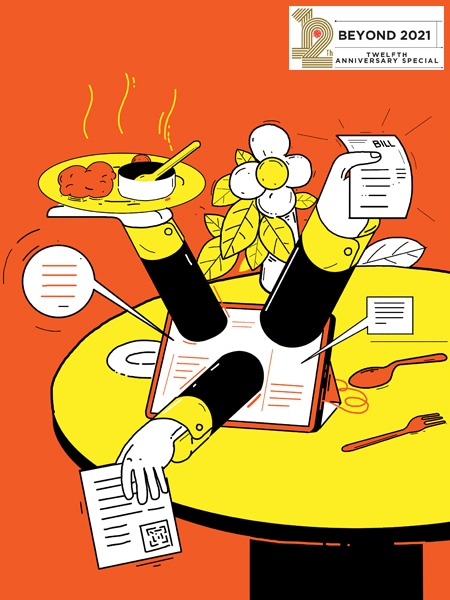
Future of Food—Hygiene, naked kitchens, digital shift new trends of F&B: Sanjeev Kapoor
The pandemic has also brought with it an improved focus on hygiene, use of technology in dining, rise of cloud kitchens and resurgence in popularity of Indian ingredients
 Illustration: Sameer Pawar
Illustration: Sameer Pawar
 I have been part of the food & beverage (F&B) industry for over three decades. I have seen many changes, some good, some not so good, but never could I have imagined that there would be an event in my lifetime that would put India’s F&B service industry in dire straits. Business has been put to ransom by the pandemic. But I still continue to believe the virus is just another hurdle in this race of life.
I have been part of the food & beverage (F&B) industry for over three decades. I have seen many changes, some good, some not so good, but never could I have imagined that there would be an event in my lifetime that would put India’s F&B service industry in dire straits. Business has been put to ransom by the pandemic. But I still continue to believe the virus is just another hurdle in this race of life.
It may be a temporary bump and would surely cost a lot, the cost being not only money, but also lives and livelihood. I would say that this is a ‘detox programme’ designed by nature, and each one of us will come out of it stronger. It will take some time to get back on the road and resume businesses at the same pace again but there’s no reason to believe that it won’t be back to normal. People have started to adjust to the ‘new normal’ and we have seen some huge modifications in our industry.
Let’s look at some key trends that have emerged during the pandemic and continue to flourish:
Hygiene, a Top Priority
(This story appears in the 30 November, -0001 issue of Forbes India. To visit our Archives, click here.)



 Noida resident Parul Sachdeva became a home chef during the pandemic. Through food shows on TV, YouTube and social media, people have learnt to make various dishes and turned their personal kitchens into kitchens for business
Noida resident Parul Sachdeva became a home chef during the pandemic. Through food shows on TV, YouTube and social media, people have learnt to make various dishes and turned their personal kitchens into kitchens for business



